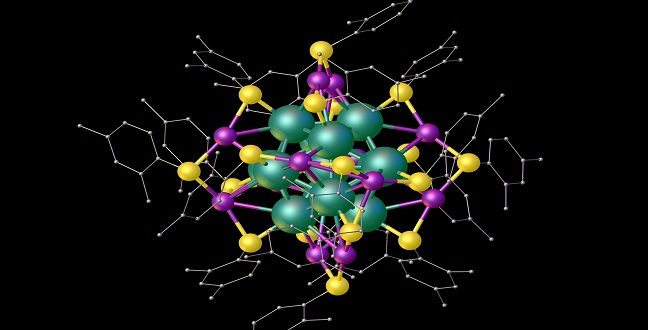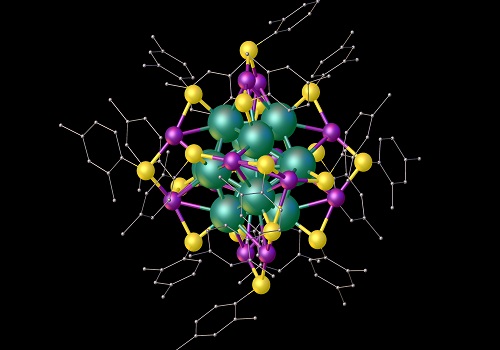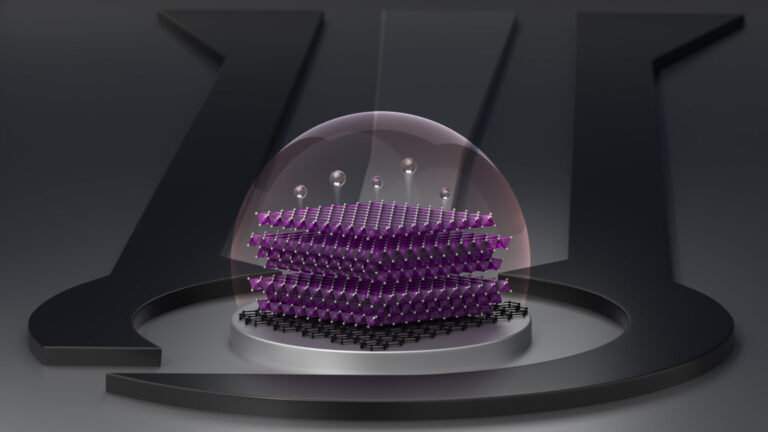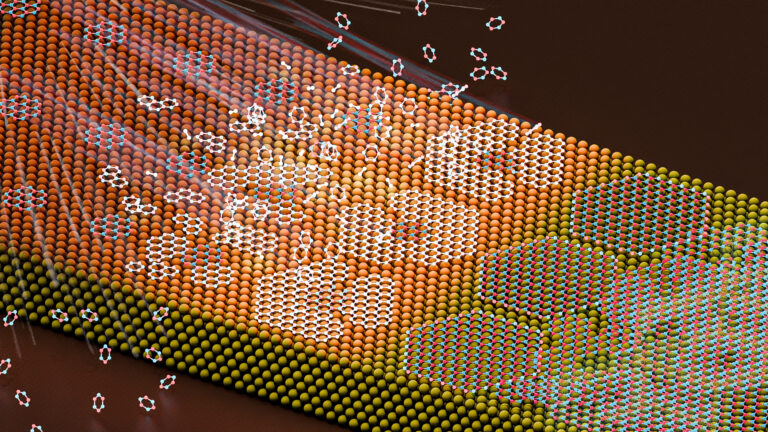Material Science and Engineering
Silver nanoparticles’ gold luster
An atomically precise investigation reveals close similarities between silver and gold nanoparticles.


Structure of the nanoparticles containing exactly 25 silver atoms (purple, green) and surrounding stabilizing components.
© 2015 KAUST
An atomically precise silver nanoparticle that is almost identical to gold nanoparticles has been synthesized by researchers from KAUST1. This offers an alternative candidate for potential industrial use as well as the opportunity to address an age-old question of fundamental differences between silver and gold.
Nanoparticles with an atomically precise number of constituent atoms are of interest for applications such as catalysis, in which they enhance a diverse range of chemical reactions. The particular number of atoms of each individual nanoparticle lends them properties similar to atoms; for example, energetic states.
Having a precise number of atoms also makes these types of nanoparticles relevant for fundamental research, said Osman Bakr from KAUST’s Physical Science and Engineering Division, who led the research team.
“They help provide answers to fundamental questions, such as how atomic properties manifest themselves as the number of interacting atoms increases,” said Bakr. “Because their structure is precise and known, they can be computationally modeled and their properties predicted with high precision.”
Previous research has produced a wide variety of known atomically precise nanoparticles made from different quantities of gold atoms. Gold nanoparticles are desirable for their good catalytic properties, but they are also an expensive resource, and the high cost is a drawback for their commercial potential.
The researchers wanted to know whether atomically precise nanoparticles made from comparable elements such as silver could produce similar properties to gold. Comparison of the properties of gold and silver nanoparticles requires them to have not only the same number of atoms, but also to have the same chemical structures on their surfaces used to stabilize the particles in their environment.
Unfortunately, there are only a few known types of atomically precise silver nanoparticles compared to gold nanoparticles. Careful design and nanoparticle synthesis has enabled the researchers to synthesize silver nanoparticles containing precisely 25 atoms each and with the same surrounding molecules as gold nanoparticles having the same number of atoms.
Comparison of nanoparticles shows their structure and properties to be remarkably similar, although there are subtle differences in the angles of the chemical bonds between the metal atoms and the length of the bonds. The optical properties of the two types of nanoparticles are also nearly identical, with only small differences in the color of their optical absorption spectra.
Exploring their practical potential will be the next step, said Bakr.
“It will be interesting to see how these similarities and differences are correlated to their properties such as catalytic activity and nobility of their constituent atoms,” he noted.
References
- Joshi, C.P., Bootharaju, M.S., Alhilaly, M.J. & Bakr, O.M. [Ag25(SR)18]¯: The ‘Golden’ Silver Nanoparticle. Journal of the American Chemical Society. 137, 11578–11581 (2015).| article
You might also like

Material Science and Engineering
Electron movie guides design of layered perovskite materials

Material Science and Engineering
Remote region sensor for essential vitamin deficiency

Material Science and Engineering
Low-power hydrogen sensor detects leaks in an instant

Material Science and Engineering
Illuminating pathways to long-lived organic solar cells

Chemistry
Beating the dark current for safer X-ray imaging

Chemical Engineering
Net benefits for advanced materials design

Material Science and Engineering
Atom-thin insulator grown into perfect films

Material Science and Engineering



